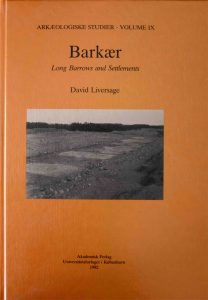Available Back Issues
Available back issues listed below can be ordered by personal request to acta@worldarchaeology.org
Price: 20 Euro / 150 DKK
KLAVS RANDSBORG. Hjortspring: warfare and sacrifice in early Europe. 251 pages, 66 b/w figures and photos. 1995. Århus: Aarhus University Press; hardback.
“…the Hjortspring find is used here as a pretext for a brilliant scholarly excursus that takes in and spits out data and ideas bearing on five millennia of European conflict and belief.” (T. Taylor)
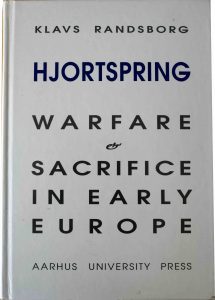
KLAVS RANDSBORG. Bronze Age Textiles: Men, Women and Wealth. 176 pages, 33 figures and 19 tables. 2011. Duckworth Debates in Archaeology. Bristol: Bristol Classical Press.
Klavs Randsborg examines completely preserved woollen dresses, both female and male, from Danish oak coffin graves of the early second millennium BC. These garments, matched in age and superb preservation only by finds from Ancient Egypt, along with related artefacts such as images and figurines, are used to build up a rich picture of Bronze Age society and culture in the context of archaeological, ethnographical and historical information from Europe and beyond.

KLAVS RANDSBORG. Roman Reflections. Iron Age to Viking Age in Northern Europe. Debates in Archaeology. 2016. London: Bloomsbury.
In an original way, the book brings late prehistoric Denmark – best known for its so-called ‘bog bodies’ – into a world dominated by textual histories, principally that of Tacitus.

KLAVS RANDSBORG. Archaeology and the Man-Made Material Reality. 104 pages with illustrations. Paperback 1992.
A personal account of archaeological studies. The structure is thematic – chapters, for example, on `The place and its context’, `Interpretations and society’, `Archaeology and history’. It concentrates on the important issues of the unity of archaeology and its great potential for the future.

KLAVS RANDSBORG & Kjeld Christensen. Bronze Age oak-coffin graves: archaeology and dendro-dating.; 246 pages, 25 plates, 59 figures, 15 tables. Acta Archaeologica 77, Acta Archaeologica Supplementa VII, Centre of World Archaeology, Publications 3. 2006. Blackwell Munksgaard.
The volume derives from the absolute dating of some of the oak coffins containing Bronze Age burials. It is in two parts: the second, ‘Dating of Bronze Age oak coffins from Denmark & Schleswig’ (pp. 163-246) by Christensen presents the dendrochronological data, while the first, ‘Opening the oak-coffins: new dates – new perspectives’ (pp. 1-162) by Randsborg and dedicated to Andrew Sherratt provides a wide-ranging commentary on the burials.

KLAVS RANDSBORG. The Viking Age in Denmark: The Formation of a State. 206 pages, Hardcover. 1980. London: Duckworth.
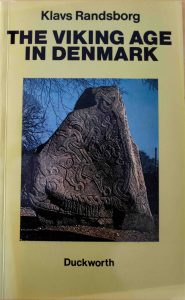
KLAVS RANDSBORG. The First Millennium A.D. in Europe and the Mediterranean: An Archaeological Essay. 230 pages, 83 figures, 16 tables, 9 plates, 4 appendices. 1991. Cambridge: Cambridge University Press.
“As archaeology as a whole has developed more sophisticated perspectives, interpretive techniques, and analytical methods, it has become apparent that archaeological approaches to medieval times can indeed provide considerable information that the historical sources do not, especially in the realms of economic and social development and change…Randsborg’s book is unusual and especially valuable in its linking of the Roman and medieval periods. As the book illustrates so well, there are significant trends that can be traced through those periods, and Randsborg shows which way the trends go at different times. By exploring major themes, the book suggests numerous potential topics for future research.” (Peter S. Wells)
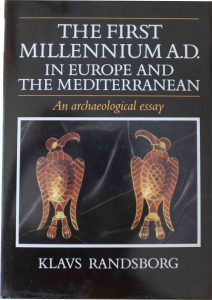
KLAVS RANDSBORG. Inigo Jones & Christian IV: Archaeological Encounters in Architecture. Acta Archaeologica Volume 75, Issue 1. 2004. Oxford: Wiley
In 1655, the English architect John Webb wrote enthusiastically about his greatly admired late master and collaborator, the great traveller, architect and stage set producer Inigo Jones (1573–1652), in particular on his services to several great kings, queens and princes, including English royalty and King Christian IV of Denmark. Inigo Jones is, of course, the introducer of Palladian traditions in English architecture, as magnificently exemplified by the well-known beautiful Queen’s House in Greenwich at London of 1616, now the National Maritime Museum, and of the New Banqueting Hall at Whitehall, London of 1619…Quite possibly, the Rosenborg Gate in Copenhagen is also by Inigo Jones, the great modern architect of Britain. If so, it is not only a novel piece of architecture by his pen – and the mundane work of others – but also his earliest. In fact, Inigo Jones’ virtually earliest architectural drawing, a stage set of 1608, ‘‘House of Fame’’, depicts a gate tower on the Rosenborg Gate model.

KLAVS RANDSBORG. Kivik. Archaeology & Iconography. Acta Archaeologica 64, 1, 1993. København: Handelshøjskolens Forlag, 1994. 147 p.

Tove Benedikte Jakobsen. Birth of a World Museum. Acta Archaeologica Volume 78. 2007. Acta archaeologica Supplementa 8, Centre of World Archaeology (CWA) 4. Oxford: Wiley-Blackwell
The origins of the National Museum of Denmark, 1807-1848 : an account of the years of the Royal Commission for the Preservation of Antiquities based on the Commission.
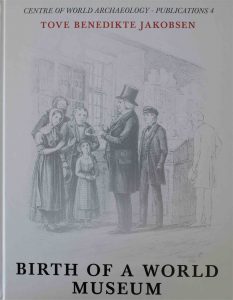
KLAVS RANDSBORG (Ed.). Archaeology: North Atlantic to the Baltic on to the Mediterranean. Acta Archaeologica Volume 82. 2011. Acta Archaeologica Supplementa 12, Centre of World Archaeology publications 8. Oxford: Wiley-Blackwell.
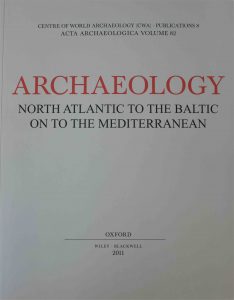
INGA MERKYTE. Lîga. Copper Age Strategies in Bulgaria. Acta Archaeologica Volume 76, Issue 1. 2005. Acta Archaeologica Supplementa 6, Centre of World Archeology – Publications 2. Copenhagen: Blackwell Munksgaard.

DAVID LIVERSAGE. Barkær. Long Barrows and Settlements. Arkæologiske studier Volume IX. 1992. Copenhagen: Akademisk.
